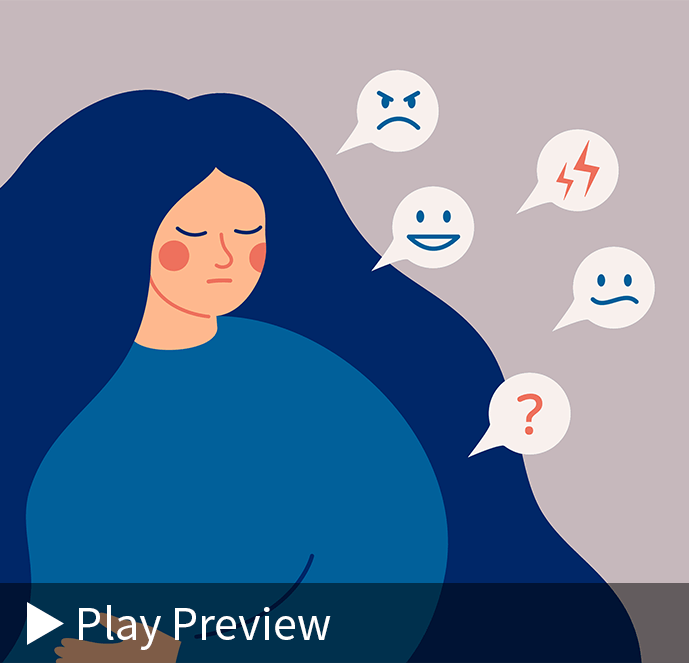Our work supports individuals' social, emotional & academic learning, whether they’re neurotypical or Neurodivergent
Respecting Neurodiversity by Helping Social Learners Meet Their Personal Goals
Authors: Pamela Crooke, PhD, CCC-SLP and Michelle Garcia Winner, MA, CCC-SLP
Neurodiversity is important. Navigating the social world is important, too. We believe both are important, have value, and are worthy of a deeper discussion.
First, we all need to be on the same page in the ways in which we define each. Neurodiversity, in most cases, refers to the idea that differences in human brain function should be recognized and respected. So, individuals who may have a diagnosis of, for example, attention deficit hyperactivity disorder (ADHD) or autism spectrum, do not have a disorder but instead learn differently. In other words, brain and learning differences are just that—brain and learning differences. Proponents would argue that these differences in learning styles result from differences in brain wiring, and that all learning styles are acceptable and should be respected as such.
Neurodiversity and multiple intelligences
The Neurodiversity movement is complementary to the principles of multiple intelligences (MI). MI proposes a broader view of intelligence as multi-dimensional, rather than a limited view of intelligence based on standardized IQ testing (Gardner, 1983). Gardner proposed varying types of intelligences which became a catalyst for a wider recognition of several types of intelligences. He noted that an athlete or artist can have intelligence that doesn’t show up on standardized testing but is equally important to nurture. He also proposed that by understanding a person’s profile of intelligences, we can identify strength-based channels, which might encourage learning in a manner that may not be as accessible through a weaker channel. Many schools today have adopted the principles of MI as they consider differing types of learners.
Few would argue that children come to school with a wide range of innate abilities in their mathematical, linguistic, spatial/artistic, naturalistic, and athletic intelligences. And our role, as parents and educators, is to help them grow, improve, and expand to the best of their abilities based on their individual starting points. We still teach math to children, even though some may be wired with stronger mathematical abilities. We don’t question why we teach history and science in the curriculum, but what about interpersonal and intrapersonal instruction (two types of intelligences that have been shown to be among the most critical for adult success)? In fact, social emotional competencies are integral to working in a group, understanding perspectives in reading fiction, writing for different audiences, and interacting with others. In some ways, inter/intrapersonal intelligence intersects and touches every part of the home and school day.
To take this example a little further, we are all clearly diverse in our bodily-kinesthetic and visual-spatial intelligences. Some of us are neurologically gifted in our coordination and creativity, while others of us must work to just do the basics.
On Demand Courses Taught by Experts
Support & value neurodiversity with hands-on strategies!
25+ years of clinical practice and the latest research inform these one-of-a-kind online training courses that explore a range of aspects required for developing social competencies, including self-regulation, executive functioning, social problem solving & social anxiety management. Take this unique opportunity to learn deeply about the social world and the practical strategies & tools within the Social Thinking® Methodology for supporting neurodivergent and neurotypical learners (ages 4–80) in their social, emotional, and academic learning journeys toward achieving their goals. Taught by experts, these practical, acclaimed courses have been viewed by more than 25,000 people just like you from around the world. Engage in powerful learning and earn CE Credit (if you’re eligible). To book a customized training for your school or clinic, please email us.

What’s Alexithymia?
What is alexithymia? It refers to challenges in developing awareness of one’s feelings, identifying, and distinguishing them from other physical sensations—and it’s gaining interest in the research, schools, and clinical arenas. Educators and parents have reported an increase in overall “regulation” challenges in the classroom, on the playground, and during small group activities. We’ll highlight select key aspects of emotional awareness and regulation and its role in perspective taking. Specifically, we’ll explore how alexithymia can impact the building blocks for spontaneous perspective taking across all contexts. We will suggest practical strategies to increase awareness of feelings within the perspective-taking process to use within the classroom, school, community, and home. The 90-day Recorded Replay Access begins at the time of Registration.
1.5 hours of CE credit available for select professionals.
Social, Emotional & Academic Learning Resources Across All Ages
Practical concepts & strategies to help neurodivergent and neurotypical people reach their social goals
Social, emotional, and academic learning is a lifelong journey. At some point, we all struggle in social situations, and engaging in a social and emotional thinking and feeling-based process can be difficult at times for everyone in the social world—at home, at school, at work, and within the community. That’s why the Social Thinking® Methodology offers a diverse array of research-informed resources, training, curricula, practical strategies, and visual tools for all developmental ages, from 4 – 80, and all social learners, neurodivergent and neurotypical. Teachers, speech-language pathologists, counselors, parents, and therapists just like you have used our lessons & strategies for more than 25 years with results that make a difference.
Helping More Than 2.5 Million People Around the World for Over 25 Years
Develop Social Competencies
The Social Thinking Methodology provides evidence-based strategies to help people ages four throughout adulthood develop their social competencies, flexible thinking, and social problem solving to meet their own social goals and improve:
- Conversation & social connection
- Executive functioning
- Friendship & relationship development
- Perspective taking
- Self-regulation
- Social Thinking Vocabulary



